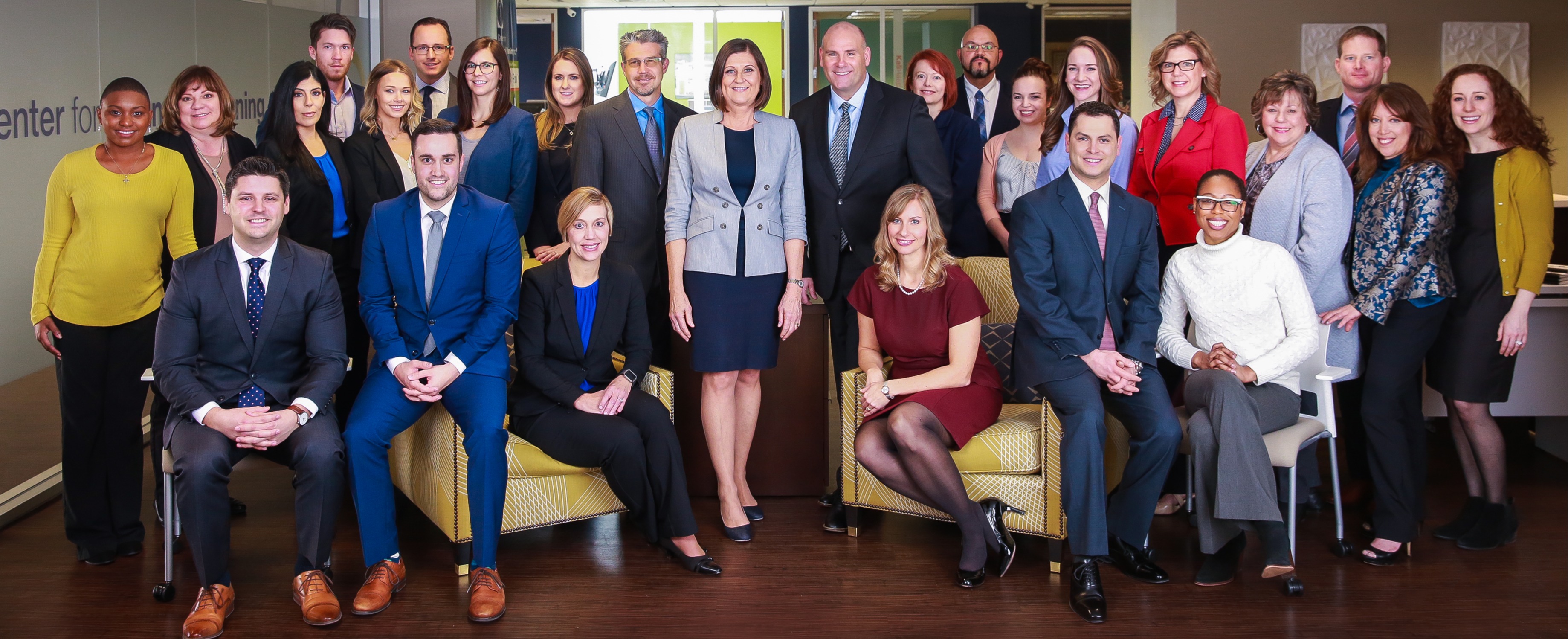Say hello! We’d love to hear from you.
© 2024 Copyright – Small Giants Community. All Rights Reserved

For nearly three months now, office buildings across the country have sat vacant, while its former occupants adjust to working from makeshift home offices and scramble to learn video call etiquette.
For those who have long called for remote work to go mainstream, it’s an imperfect experiment: employers lacked time to make proper plans, parents are managing restless, isolated children, and we’re all struggling with the mental toll of our country’s health, economic, and racial crises.
Although the circumstances are extraordinary, this experience is prompting many to reconsider their stance on virtual work. In the short-term, working from home offers continued safety to team members who aren’t confident about returning to the office. But in the long term, what can we learn from this experience to create a more flexible, rewarding work experience for our team members?
We talked to Lauren Adams, Director of Operations at the Center for Financial Planning, to hear her perspective on returning to the office, the future of working from home, and how to keep employees engaged right now.
Here’s how leaders are Stepping Up the way teams work.
As the economy reopens and stay-at-home orders are relaxed, leaders are facing tough decisions about when and how to return to the office. Is it time to start transitioning your team back to the office? Should you play it safe and wait it out at home? And do your team members even want to go back to in-person work?
Your approach depends on the kind of business you do and the unique needs of your team members. Here’s one perspective on how to calculate your next move.
Prior to the pandemic, the Center for Financial Planning only offered five work-from-home days a year. Financial planning doesn’t lend itself to virtual work: clients are calling into the office, checks are received and deposited, and there’s a new stack of documents to scan, print, and mail out every day. But over the last few months, they’ve figured out a way to take most of their processes virtual, and it’s allowing them to take their time before returning to the office.
“Our fear was that our business isn’t conducive to remote work,” says Adams. “But this put a lot of those fears to rest, and we can do the vast majority of our work from home. We’ve decided to take the conservative and cautious approach and continue to work from home until at least July 4th.”
As Adams shared during a recent Small Giants Leadership Academy session, it’s about offering people peace of mind during a time when many feel safer at home. Likewise, those with children are still struggling to find childcare and need the flexibility of working from home. After so much uncertainty in the early months of the pandemic, the Center is now focusing on providing its team with clear, consistent guidance. Instead of leading the charge to reopen the economy, they’re making decisions that allow them to be flexible, cautious, and clear.
“We’re going to let things play out and learn from other people,” says Adams. “We’re using this time to reimagine our office layout and make renovations. We’re still in crisis mode, but we have a framework for making decisions for the second half of the year.”
Beyond working from home to keep team members healthy and safe, many leaders have been inspired to reimagine the way their teams work long term. For companies that went into this crisis with strong cultures and high engagement, they’re finding that their cultures are resilient enough to not just survive this test, but to thrive during it.
It’s prompting purpose-driven leaders to imagine what else is possible for their organizations — what can we take from this experience to improve our cultures and serve our team members in new ways?

Despite all the buzz around the end of office work, there are many industries where working from home full-time just doesn’t make sense. Financial planning is one of them — personal, face-to-face interactions with clients is critical to the work. Now that Adams and her team have figured out how to work from home, they’re going to stay that way until they’re absolutely certain it’s safe to return to the office.
But as for the long-term viability of virtual work, they see it as a lifestyle benefit to offer, not a new way of life.
“In reality, many people want to be in the office,” says Adams. “Just because we can be virtual, doesn’t mean that we should. We’re going to look into a more flexible approach that offers additional remote work options. That’s especially important for those with children and with long commutes. But for the most part, nobody’s asking for a fully-remote culture — we really miss each other.”
At this point, the shock of the pandemic has worn off for many, and we’re settled into our new normal. Many leaders are sorely missing the engagement opportunities that summertime usually offers: offsite retreats, summer picnics, and community service events are all postponed until further notice.
It takes some creativity, but there are plenty of fun, thoughtful ways to boost employee engagement while teams work from home.

It’s not an easy time to be working in wealth management. The team is up against widespread health and financial volatility, and they’re all working harder than ever to be available to clients. As a result, the leadership team is working just as hard to take care of team members and keep them engaged.
“We’re utilizing breakout rooms on Zoom to ensure people are still getting that intimate connection with one another,” says Adams. “We’re also hosting virtual pizza parties and happy hours. Managers and leaders are doing a lot of personal check-ins. We’re staying close and connected.”
Their team is also working to respond quickly and diligently to the national conversation around racial justice. Adams was a facilitator for a company-wide discussion on the topic last week, collecting input from the entire firm on how a great company responds in a moment like this.
“We hope this discussion spurs a plan for lasting, measurable change within our organization,” says Adams.
There’s no one way to approach this next phase, but purpose-driven leaders are committed to listening to their people and making decisions that serve their team and the culture. Virtual work is likely to play a larger role in all of our lives for the long term, but purpose-driven leaders know it’s not so much about where you’re working or even how — it’s why.
These leaders are part of Small Giants companies — companies that prioritize their purpose and culture and invest in their emerging leaders.
One way Small Giants companies invest in their next generation of leaders is by enrolling them in the Small Giants Leadership Academy. This robust one-year certification program consists of virtual learning sessions with expert leaders and coaches, an extensive resource library, on-the-ground meetups with your cohort, a leadership assessment, and your event ticket to two Small Giants gatherings.
© 2024 Copyright – Small Giants Community. All Rights Reserved
Small Giants Community Program Director
Virtual Position
The Small Giants Community is hiring! Are you looking for a job where you get to work remotely with a hard-working, tight-knit team? Do you like talking about values-based businesses, inspiring leadership stories, and Ted Lasso? Boy, do we have the job for you!
We’re a high-performing team working hard to grow the Small Giants Community, an organization committed to identifying, connecting, and developing purpose-driven business leaders. Our network spans more than 6,000 leaders, 300 companies, and 28,000 employees who are growing with intention, and we believe that more and more people are beginning to see the value in purpose-driven business.
Basically, we’re a small but mighty team. We’re energized by coffee, the sun and leaders doing great things in the world via their companies. We’re looking for someone to add value to our team with their own unique skills, motivations, and experience. This person has to be flexible and able to manage their own workload deftly while also being incredibly team-oriented.
Position Overview:
We are seeking a highly motivated individual to join the Small Giants Community as a Full-Time Program Director. In this role, in collaboration with the executive director, you will be responsible for overseeing and managing various programs including the Summit, Leadership Academy, Sounding Board, content development, and our marketing efforts. You’ll also be responsible for cultivating relationships and managing a team. You will play a vital role in shaping and driving the organization’s mission to foster values-driven leadership and promote a community of purpose-driven businesses.
Responsibilities:
Key Qualifications:
Benefits & Perks:
About the Small Giants Community team:
Our Purpose
To identify, connect, and develop purpose-driven business leaders.
Our Core Values
Trust Each Other: We understand that the team will thrive when we fully trust one another and assume the best intentions, support one another, and work toward a common goal.
Grow with Purpose: We continuously invest in our learning and development, seeking new opportunities to grow our skills and strengthen our weaknesses so that we can better serve the Community.
Work Mindfully: We prioritize meaningful, quality work over everything. We’re committed to being present with the current objective and giving it our full attention, providing the best possible opportunities and resources to our Community.
Create Great Experiences: We are committed to doing things differently. We understand that the Small Giants difference is high-class, personal and meaningful experiences that result in lifelong learning and lasting relationships.
Be Responsive: We believe in meeting and exceeding the promises we make. In working with each other and with customers, we are responsive and accountable.
Sounds like an interesting opportunity and/or want to learn more? Email your resume and cover letter to hamsa@smallgiants.org.
Notifications
